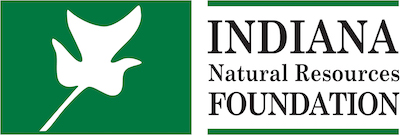Planting a Legacy
Creating a legacy means leaving this world a better place than you found it.
Searching for a way to leave a legacy is usually reserved for individuals – an entrepreneur, a maverick, someone with ambition to leave his or her mark on the world. However, a new wave has rolled in – corporations are also looking to leave a legacy, and they make their legacy part of their mission.
Clif Bar is one of those companies. Their corporate model includes goals to reduce their carbon footprint and improve the communities they work in.
Earlier this year, Clif Bar partnered with the Indiana Tree Project, Indiana Natural Resources Foundation, and DNR Division of Forestry to put their aspirations to work. In one day, volunteers from each organization planted nearly 5,000 trees in the Morgan-Monroe State Forest.
The Indiana Tree Project, with a goal to plant one million new trees in the state, came to the attention of Clif Bar through their Environmental Health, Safety & Sustainability Specialist, Jeremiah Caplinger. He discovered the tree project through his DNR e-newsletter subscription. The project’s longevity to impact Hoosiers today and in the future attracted Caplinger.
“You look at some of the urban things that are being done – those, I think, are a moment in time,” Caplinger said. “They don’t last 10, 15, 20 years. The landscape changes just from an urban development standpoint. This tree project is something that’s going to be there for generations to come. It’s a lasting impression. It’s cool that we can lead the charge. Hopefully, we can get more organizations on board.”
Rebecca Leary, Clif Bar’s Indianapolis Community Project Coordinator, explained some of the benefits to employees who traveled to Morgan-Monroe on a bus and spent the day planting trees.
“Days after, people kept coming up to me and saying this was the best event that we’ve done,” Leary said.
She said volunteering outside of the workplace in a new environment made the employees closer. They felt good about the work they accomplished.
“It builds that teamwork – that camaraderie. It really helps with productivity, trust, and a willingness to help each other out,” Caplinger said.
The bus ride included an educational conversation with an experienced DNR forester.
“We learned about forest management,” Leary said. “He explained how sometimes you have to go in and clean up areas because, otherwise, the forest isn’t going to flourish.”
Foresters balance such conditions by planting more trees.
DNR State Forester, Jack Seifert, spoke of the many benefits of the tree planting day.
“Creating a young or ‘baby’ forest, which is a declining habitat type needed by many threatened wildlife species [is one],” he said. “Second, is planting more oak trees, which are not regenerating as well as we would like in natural forest conditions. Third, we are capturing more carbon from carbon dioxide and storing it in the woods.”
The acres of new trees at Morgan-Monroe will grow for years to come. Each volunteer who planted that day can now say those trees are part of their legacy. Their work will be appreciated by wildlife and humans alike.
Caplinger’s desire to find a Clif Bar volunteer project that would leave a lasting impression came to fruition.
“I’ll take my daughter, when she gets old enough, down to Morgan-Monroe and say ‘hey, we did this for you,’” he said. “The next generation will appreciate that and hopefully carry on that trend.”
